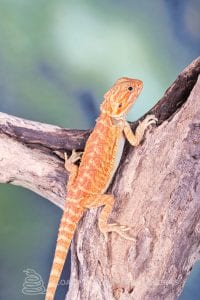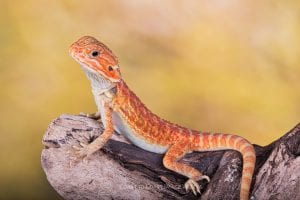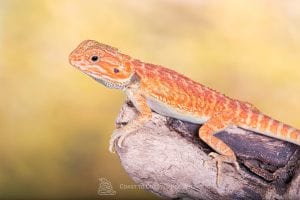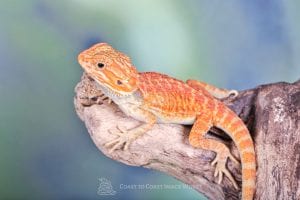Bearded dragons are now one of the most popular lizard pets in the world. They have a great character, relatively easy to manage and a great addition to many families – I say this due to the fact that they often become part of the family very much like a dog. This species really is that characterful, they could even be described as cheeky.
They originated from Australian deserts, and have been in the hobby for a couple of decades. In that time they have been selectively bred to produce many different colour morphs – some are startlingly different to the lizard seen in the wild. The topic of colour morphs is far outside the purpose of this small article, it’s fair to say this is now a hobby within a hobby, with a vast array of colours and variations available.
 The care of Bearded Dragons is fairly easy, as long as some simple guidelines are met – if they are a pet Dragon can live in excess of twelve years. An adult Beardie will require a sizable vivarium, ideally around six feet in length – many keepers use a four feet long vivarium and provide daily exercise. This species is not regarded as arboreal, however they will climb – most keepers provide climbing branches and a vivarium height of, at the least, 2 feet tall, preferably more. They can be messy animals, and their faecal matter does have the ability to smell so much as to clear an average sized home. Daily spot cleaning is essential, with a full deep clean strip down of the vivarium every four weeks. Within the vivarium provide a small water bowl and a choice of hides.
The care of Bearded Dragons is fairly easy, as long as some simple guidelines are met – if they are a pet Dragon can live in excess of twelve years. An adult Beardie will require a sizable vivarium, ideally around six feet in length – many keepers use a four feet long vivarium and provide daily exercise. This species is not regarded as arboreal, however they will climb – most keepers provide climbing branches and a vivarium height of, at the least, 2 feet tall, preferably more. They can be messy animals, and their faecal matter does have the ability to smell so much as to clear an average sized home. Daily spot cleaning is essential, with a full deep clean strip down of the vivarium every four weeks. Within the vivarium provide a small water bowl and a choice of hides.
Heating and light is easily catered for – however there are many ways of providing this and they are hotly debated within the hobby. This species basks during the day so it is important to  understand they require an overhead heater. Many keepers use ceramic heaters for this purpose, as it gives no light and can be used, at a lower output, for night-time use. If this is the case ceramic heaters must be paired up with very bright T5 lighting tubes. Other popular forms of providing a basking heater are incandescent and halogen bulbs, but if a night-time heater is required a ceramic will also need to be used at night. Whatever heater is used please provide a thermal gradient, a hot end and a cool end to the vivarium. UVB lighting must be provided, the older T8’s can be used, but we highly recommend the newer T5 fluorescent tubes – the 12-14{cb5d0a8cf0c44aef2db327d9ab0dba08dd09aed1126b509e5fa01d3aaa87fe47} varieties are the best choice.
understand they require an overhead heater. Many keepers use ceramic heaters for this purpose, as it gives no light and can be used, at a lower output, for night-time use. If this is the case ceramic heaters must be paired up with very bright T5 lighting tubes. Other popular forms of providing a basking heater are incandescent and halogen bulbs, but if a night-time heater is required a ceramic will also need to be used at night. Whatever heater is used please provide a thermal gradient, a hot end and a cool end to the vivarium. UVB lighting must be provided, the older T8’s can be used, but we highly recommend the newer T5 fluorescent tubes – the 12-14{cb5d0a8cf0c44aef2db327d9ab0dba08dd09aed1126b509e5fa01d3aaa87fe47} varieties are the best choice.
 They are greedy feeders and will eat a mix of insects and greenery such as dandelion leaves and salads. There are many commercially available insect livefoods such as crickets, locusts, waxworms, cockroaches etc – use them all to provide a varied diet. Be careful as many Beardies will try to refuse greens and only eat insects, which is not good for them. Always use a good quality reptile multi-vitamin and mineral supplement for the livefoods and greens.
They are greedy feeders and will eat a mix of insects and greenery such as dandelion leaves and salads. There are many commercially available insect livefoods such as crickets, locusts, waxworms, cockroaches etc – use them all to provide a varied diet. Be careful as many Beardies will try to refuse greens and only eat insects, which is not good for them. Always use a good quality reptile multi-vitamin and mineral supplement for the livefoods and greens.

do bearded dragons need both of uv and nuetrerebon an calcium powder mix